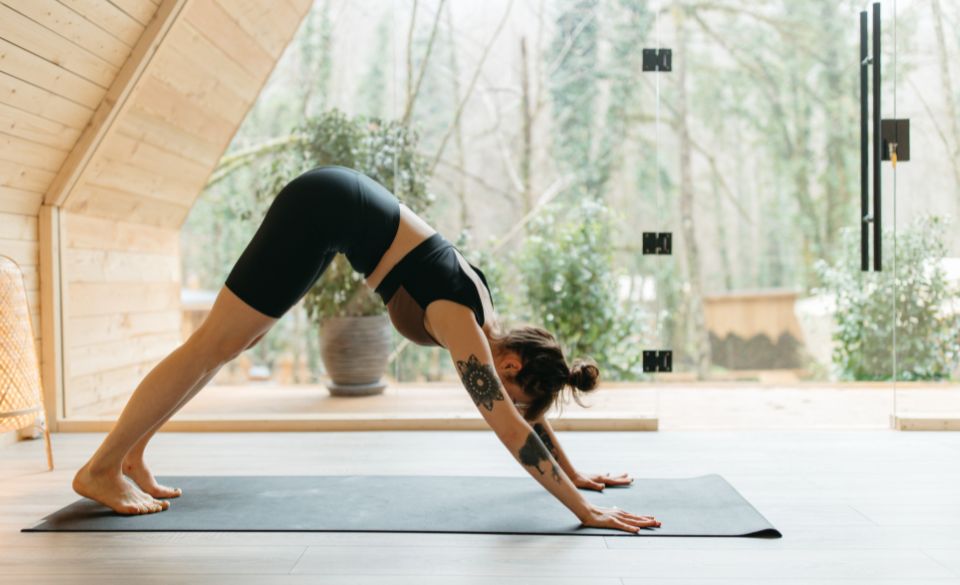
The Surprising Benefits of Pilates
Pilates, a hybrid exercise program combining elements of calisthenics, yoga and ballet stretching, is becoming increasingly popular for its numerous health benefits. While you may have heard about its beneficial effects on your posture and core strength, you may be less familiar with the many other surprising advantages you can gain from regular Pilates. In this article, we will explore the numerous ways Pilates can help improve your overall physical, mental and emotional wellbeing. So get ready to experience the many benefits of Pilates for yourself!
What is Pilates?
Pilates is a low impact exercise practice that was developed by Joseph Pilates in the 1920s. It combines physical conditioning with a focus on strengthening the core muscles and assisting with relaxation, posture and coordination.
Pilates is a type of physical activity that involves movements, stretches, and aerobic exercises that help to promote balance, control, strength, and flexibility. Traditional Pilates focuses on six main elements known as the “Powerhouse”: the hips, mid-back, abdominals, shoulders, arms and legs. These exercises train the core muscles to support efficient movement while strengthening the spine and limbs.
Pilates exercises are designed to give the whole body a workout. They focus on both balance and strength, targeting all major muscle groups. The focus on core muscles, posture and coordination helps to give users a strong and stable foundation for all other movements and activities.
Pilates has a great range of benefits, from improving balance and flexibility, to increasing stability and endurance. People of all fitness levels can use Pilates exercises which is why it’s become so popular in recent years. This exercise practice is also a great way to develop better body alignment, reduce stress, and improve core stability. With regular practice, people can achieve a toned and elongated body without needing to lift weights.
How Start With Pilates
To get started, grab a Pilates mat, a set of light weights (if you’re up for it) and a comfortable pair of gym clothes. Start with warm-up exercises like stretching, to get your body ready for the more complicated Pilates exercises. Make sure you focus on proper form and technique, as this is paramount in Pilates.
Once you have completed your warm-up, you can start with the more difficult Pilates movements. To really get the most out of Pilates, focus on using slow, controlled and precise movements. This helps you to properly target the muscles you want to use. For example, the traditional Pilates exercises include the roll-up, 100,single-leg circle and the saw. These exercises use the abdominal and lower back muscles to help create balance, tone muscles and improve posture.
Another important factor to think about when completing Pilates exercises is breathing. While you hold a certain position or move through a certain exercise, make sure you are taking deep, slow breaths. This helps to fill your body with oxygen and helps you to conserve energy.
Last but not least, be sure to take resting breaks here and there if you need to. Without them, your body won’t be able to completely benefit from the workout, as it won’t be able to heal and renew muscles for the next round.
In summary, to do Pilates correctly and get the most out of the exercise, focus on the following components: proper form and technique, controlled and precise movements, deep and slow breathing, and resting in between exercises.
Who Should Do Pilates
Pilates is a great exercise option for people of all ages and physical abilities. It is particularly beneficial for those looking to strengthen their core, improve posture, increase flexibility, and improve joint mobility. People who should consider doing Pilates include those who are looking to improve their strength, decrease pain from chronic conditions or injuries, and increase their overall physical health and well-being.
For those who are looking to strengthen their core, Pilates is an excellent choice. Pilates emphasizes controlled, precise movements and unique exercises that use the abdominals and other core muscles to stabilize and support the body. Pilates supports healthy balance and posture by training the body’s core muscles to support the spine and create a strong foundation for the body to work from.
Since Pilates emphasizes range of motion, it can help decrease pain from chronic conditions or injuries. It is a low-impact form of exercise that focuses on slow, precise motions to prevent injury and create a sense of physical awareness. Pilates can also be modified to be more gentle or more challenging based on an individual’s needs and physical abilities.
Overall, Pilates is a great exercise option for anyone looking to prioritize their strength, posture, and physical well-being. Its low-impact style of movement makes it suitable for people of all ages and physical abilities, and its emphasis on precise, controlled movements can help reduce pain from injuries or chronic conditions. While it can be challenging, anyone can benefit from doing Pilates.
Benefits Of Doing Pilates
Pilates is a form of physical exercise developed by Joseph Pilates in the early 20th century. It’s based on a combination of physical and mental conditioning which focuses on whole-body development, postural alignment, strength, flexibility and endurance. Pilates is a low-impact exercise and is suitable for people of all ages and fitness levels.
Some of the benefits of doing Pilates include improved posture and reduced back pain. Pilates focuses on core stability and exercises that strengthen the deep abdominal muscles as well as the back and glutes. This helps to support the spine and improve posture, which can help to reduce and ease back pain.
Pilates can also help improve balance, coordination and flexibility. The combination of strengthening and stretching helps the body stay in alignment and be better able to move through a range of motions. This improved flexibility can help reduce the risk of injury from everyday activities.
Pilates is also beneficial for increasing mental focus and concentration. The mindful, gentle movements help keep your body and mind in the present moment. This can be beneficial for relieving stress and anxiety as well as improving your overall mental well-being.
Lastly, Pilates can help to increase your overall strength and muscular endurance. The exercises focus on strengthening and toning muscles through low-impact, controlled motions. This helps to promote muscle growth and improve your stamina and energy levels.


